This was published 1 year ago
Why it’s now make or break for the National Gallery of Australia
By Linda Morris and James Massola
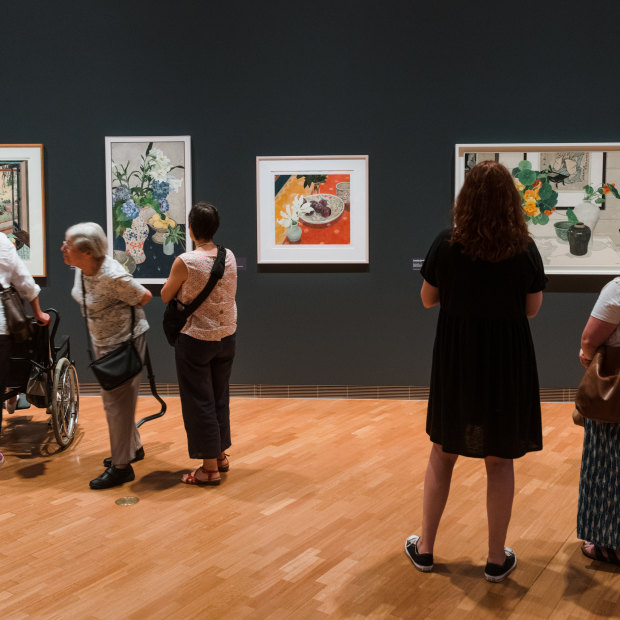
The National Gallery of Australia was founded on the premise that well-funded cultural institutions were as important to a nation’s wellbeing as Medicare.Credit: James Brickwood
As Treasurer Jim Chalmers assembles his second budget to be delivered in six weeks, the busy family man could do worse than to spend a rare idle moment at the National Gallery of Australia.
Stepping inside the Canberra home of the nation’s $6.9 billion art collection, Chalmers could gaze on the masterpiece of American abstract art, Blue poles, still drawing a crowd, and then look beyond to observe the building’s sad state of disrepair.
The lifts need urgent replacing, the roof membrane and skylights leak in a downpour, and the air-conditioning is clapped out. Some $265 million in urgent repairs are needed to bring the 40-year-old building up to standard.
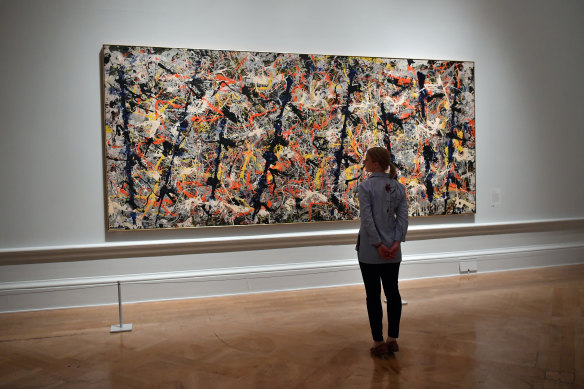
Blue poles by Jackson Pollock is now valued at more than $500 million, by far the most valuable painting in the NGA’s collection.Credit: Getty
Come July the gallery is facing a looming budget cliff, an existential crisis brought on by years of financial attrition that has had an impact on programs and exhibitions and delayed necessary repairs and maintenance.
Unless a funding solution can be found, the gallery has warned it will need to cut staff, some 50 positions over three years, close its doors two days a week and possibly impose ticketed entry.
The National Library of Australia, the nation’s repository of the published word, has been caught in the same financial crunch and has a building also in need of multimillion-dollar investment.
Funding for its digital resource, Trove, runs out on June 30 and without additional government support the popular archive could cease operations altogether.
The funding woes of eminent national cultural institutions predate the Albanese government, but it has fallen to Arts Minister Tony Burke, and a powerful subcommittee of federal cabinet led by Chalmers and the prime minister, to find a solution in the May budget.
The National Gallery and Library have appealed for more than $360 million over the next decade to care for and conserve their collections, make their buildings watertight and guarantee public access.
Burke, a strong supporter of the arts, keen guitarist and piano player, backs Australia’s national institutions receiving additional funding in the forthcoming budget, and is close to the prime minister, too.
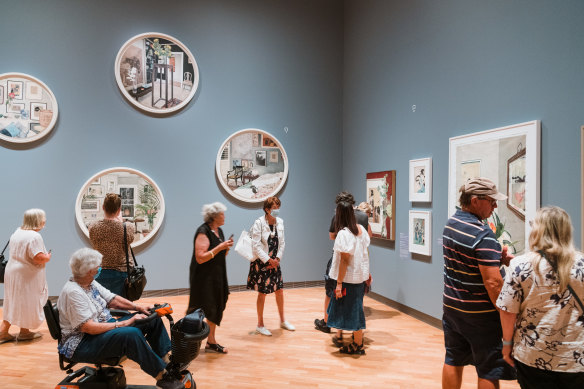
Some $265 million in urgent repairs are needed to bring the 40-year-old National Gallery building up to standard.Credit: James Brickwood
Money is likely to be found, but it’s a question of how much and, in the case of the NGA, whether it will stretch to a new roof, windows and lifts – all necessary to safeguard its collection.
Burke will have to stare down members of the Expenditure Review Committee – particularly Chalmers and Finance Minister Katy Gallagher – to secure permanent increases rather than one-off funding top-ups.
“Governments have stonewalled these institutions for years and Anthony Albanese and Tony Burke need to show some sensitivity to these huge issues despite the competing claims for government money,” says former arts administrator Michael Lynch.
“One of those idiot submarines would fix all the dilemmas of the national institutions and generate a huge amount of interest in what they can do. Where is the advocacy for these institutions?”
The NGA finds itself at these financial crossroads just months after celebrating its 40th birthday.
When Queen Elizabeth II officially opened the federal museum on Lake Burley Griffin in 1982 the ceremony was televised and broadcast to 2 million people across the country. Since then, the NGA has welcomed more than 22 million visitors through its doors.
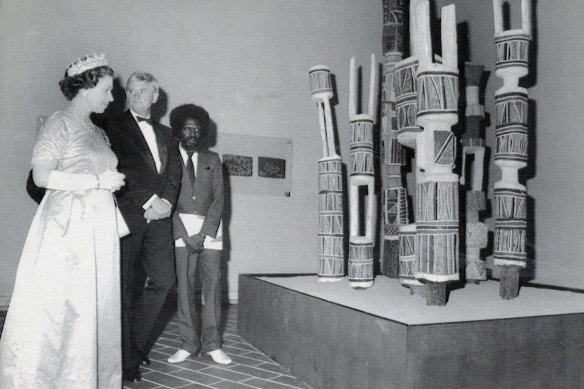
More than 22 million people have visited the gallery since the Queen opened it in 1982.Credit: SMH Archives
Pollock’s Blue poles is one of its most important works in a public art collection that owes much to the singular vision of Labor luminary Gough Whitlam and is said to be worth more than the major state collections combined.
Over 40 years the gallery has elevated and celebrated artists including Arthur Streeton and Margaret Preston, Joy Hester, Imants Tillers and Albert Namatjira.
The idea of a national art gallery and collection was first discussed in 1903 between prime minister Alfred Deakin and the artist Tom Roberts, but it took the Holt government in 1967 to set the idea in motion.
Whitlam subsequently declared the new gallery in Canberra would “fully represent not only the best Australian art but the art of other civilisations in our region and throughout the world”. James Mollison was appointed its first director, and he set about creating a contemporary art collection of global standing.
For former Australian Film Finance Commission and Foxtel boss Kim Williams, the formation of the NGA was a threshold moment in arts policy, a fulfilment of Whitlam’s bold vision that access to the arts was a fundamental human right, and well-funded and resourced cultural institutions were as important to a nation’s wellbeing as Medicare.
In the years since, investment in federal cultural institutions has been half-hearted, inconsistent and of a drip-feed nature with serious consequences for the ability of these bodies to weather economic storms, Williams says.
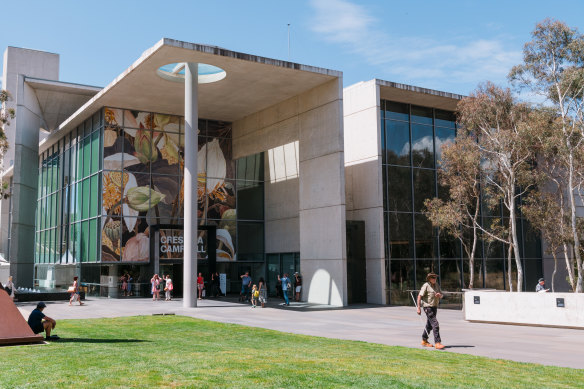
The formation of the NGA was a threshold moment in arts policy.Credit: James Brickwood
Williams blames a prejudice, what others might call a consequence of the culture wars, in which spending on the arts has been cast as an elitist pursuit.
Parliaments, including the sitting one, have a duty of care to the public institutions they create, especially those charged with the care, acquisition, conservation, and exhibition of the nation’s precious memories, he says.
The NGA’s particular struggles date to the late 1980s when national collecting institutions became subject to public service-wide annual savings cuts, known as an annual efficiency dividend.
The Rudd government imposed an additional 2 per cent efficiency dividend on the institutions soon after it came to office, forcing savings of close to $20 million to be found by the collecting institutions.
The Rudd impost was temporary, but soon after it returned to its previous level, the Abbott government ramped the dividend up again, doubling it from 1.25 per cent to 2.5 per cent in its brutal first budget and keeping it there for five years.
Since 2013 the gallery has had to find savings of $6.2 million affecting the gallery’s capacity to stage exhibitions and programs.
Top-up grants from the Morrison government helped with urgent capital works and COVID support plugged the gallery’s $18 million shortfall when bushfires and the pandemic closed it for a total of 147 days.
Under chair Ryan Stokes the NGA secured a $17 million a year equity injection to build its collection. Ironically, at a time of operational penny-pinching, the gallery awarded its largest commission to date, a $14 million outdoor sculpture by Chinese-Australian artist Lindy Lee to revitalise its sculpture garden. Those transactions, however, belong to a slice of the budget quarantined for the collection, which cannot be used to repair a leaky roof or to pay wages. And it is also subject to the efficiency dividend.
More than one cultural leader has compared the compounding effect of underfunding to the fable of the frog slowly being boiled alive.
Months before its 2022 election loss, the Morrison government commissioned KPMG to review the financial sustainability of all cultural institutions. The findings have never been released but are said to paint a dire picture of financial distress.
The think tank, A New Approach, funded by 11 philanthropic foundations, found a 4.9 per cent decline in arts and cultural funding in the 10 years to 2017 for each Australian across three tiers of government, with a marked 18.9 per cent decline in federal spending.
Budgets have likely worsened since then, says Williams. “The so-called efficiency dividend would have done its dirty work, and more, and inflation has cut in so it’s been a full-frontal attack on the intellectual and creative life in Australia.
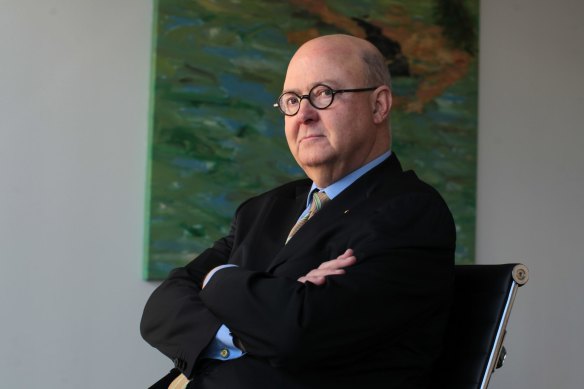
Kim Williams has called for the efficiency dividend to be removed.Credit: Ben Rushton
“There has to be a general reset that restores, in a disciplined and objective fashion, a level of funding to a proper sustainable level. The efficiency dividend must go because the majority of costs in these areas of endeavour are in people and therefore the efficiency dividend basically says you have to do the same amount of stuff with fewer people.”
Lynch agrees there is no place for efficiency dividends in the funding mix for the NGA or any national cultural institution.
“It’s a bullshit concept,” he says. “I would have thought if you’d be buying ships and tanks and submarines you might want to impose some kind of efficiency dividend on defence or other parts of government.
“It seems very bizarre to see in the last 10-plus years government impose the dividend on cultural organisations when clearly their funding base has not been expanded in any meaningful way. That’s going to have an impact on how these institutions work, how many people they can employ, and how they collect.”
Professor Peter Stanley, who worked at the Australian War Memorial for 27 years and then spent six years at the National Museum, says the collecting institutions face three challenges: the cumulative impact of efficiency dividends, the need to spend money on buildings falling into disrepair and the competing need to spend money to keep growing their visitor numbers.
“With the exception of the Australian War Memorial, they are in buildings that need repair or replacement,” he says. “The National Library got hammered by the [January 2020] hailstorm, it has limited services as it is letting water in. The NGA is 50 years old, and it won’t last forever.
“All of them are fearful that if their visitor numbers, physical and digital, fall that they won’t be worth funding. In order to meet those expectations, they take money away from their fundamental research and preservation roles.
“So they are squeezed at both ends, they don’t get enough money to preserve and they have to spend money on non-core functions to meet relevance and popularity demands.”
Stanley says there is an unjustified imbalance in funding ANZAC commemoration, militarism and the War Memorial that “demonstrates Australians don’t look at their history and culture in an equitable way”.
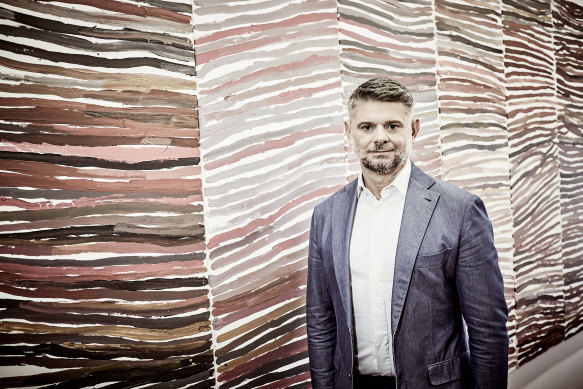
National Gallery of Australia director Nick Mitzevich is spending most of his time fundraising.Credit: Roger Deckker
The effect of funding constraints has forced the NGA’s entrepreneurial director, Nick Mitzevich, to pursue commercial and philanthropic streams of revenue. The gallery is reliant on the generosity of donors to fund 26 staff roles, stage exhibitions and deliver educational programs that would not be otherwise possible. There are limits, though, to what philanthropists are prepared to give.
“The NGA must be pushing its limits,” Lynch says. “Sydney Modern has done very well because it’s been a capital campaign, and people want to put into a new building, but it’s much harder for big institutions when you haven’t got that wow factor like Sydney Modern or the proposed NGV expansion. That’s very tricky in this post-COVID climate.”
Without stable and long-term funding the gallery risks becoming captive of public-facing activities that bolster audiences and its bottom line, says University of Sydney academic Anna Lawrenson, a specialist in museum administration.
“Traditionally, there has been an argument that it is OK to bring in blockbusters because they pay the bills – they allow institutions time and money to do pure collection research and stage more idiosyncratic exhibitions, but our institutions are such in dire straits at the moment I don’t think it’s possible to do both with current funding. It’s have high visitor numbers, have high-impact exhibitions or die.”
Former arts minister Paul Fletcher has consistently defended the Coalition’s record while being quick to point out that Labor has had two opportunities to fix these budget issues, most recently when it launched its National Cultural Policy.
For his part, Albanese has acknowledged the national galleries and museums have been “starved of funds”, and has blamed “a decade of neglect”. Burke has assured the leaders of collecting institutions the government is listening.
A cultural guide to going out and loving your city. Sign up to our Culture Fix newsletter here.
correction
An earlier version of this article stated that the Menzies government in 1967 set the idea of a national gallery in motion. This was incorrect. It was the Holt government.